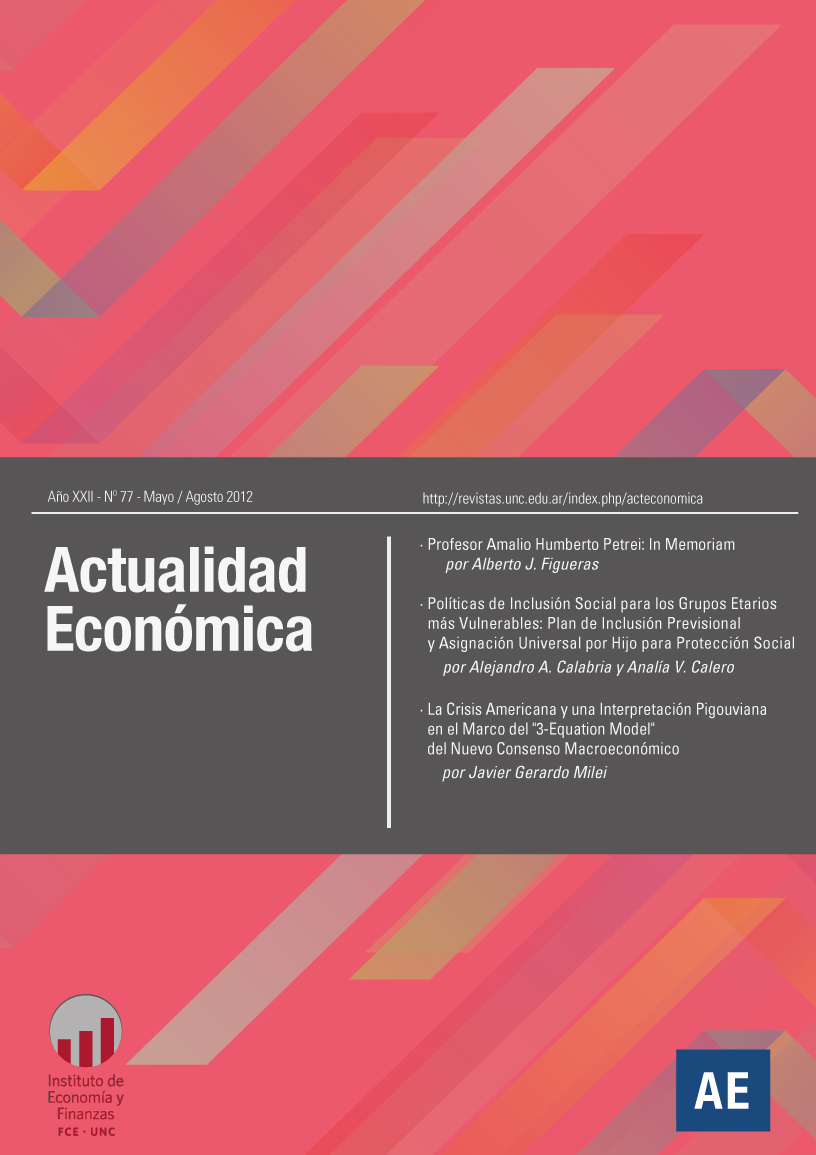La Crisis Americana y una Interpretación Pigouviana en el Marco del "3-Equation Model" del Nuevo Consenso Macroeconómico
Keywords:
Programa de Relajamiento Cuantitativo, 3-Equation Model, Crisis Americana, Nuevo Consenso MacroeconómicoAbstract
Numerosas han sido las críticas recibidas por Ben Bernanke cuando en un acto de osadía decidió poner en marcha el Programa de Relajamiento Cuantitativo (Quantitative Easing) y dar un abrupto cambio en la forma de conducir la política monetaria. Los críticos se centraron en los instrumentos utilizados y resultados obtenidos, como si estos fueran independientes sin tomar en consideración como sería el mundo si las medidas no se hubiesen aplicado. Si las autoridades monetarias en una política preventiva de estabilización endurecen su política tan pronto que nunca hay inflación, el ataque preventivo es un éxito rotundo, pero los críticos de la autoridad monetaria se preguntarán por qué se apostó por una política restrictiva cuando no existían expectativas de inflación. A partir de este argumento, en el presente artículo se propone una modificación del marco analítico del Nuevo Consenso y se intenta una explicación intuitiva de cómo el Presidente de la FED ha salvado al mundo de una nueva Gran Depresión.
Downloads
Downloads
Published
Issue
Section
License

This work is licensed under a Creative Commons Attribution-NonCommercial-NoDerivatives 4.0 International License.
Those authors who have published with this journal, accept the following terms:
Authors will conserve their copyright and guarantee the magazine the right of first publication of their work, which will be simultaneously subject to the Creative Commons Attribution-NonCommercial-NoDerivative 4.0 International License that allows third parties to share the work as long as the author and first publication of this magazine are indicated.
Authors may adopt other non-exclusive license agreements to distribute the published version of the work (e.g., deposit it in an institutional telematic archive or publish it in a monographic volume) provided that the initial publication in this journal is indicated.
Authors are allowed and encouraged to disseminate their work through the Internet (e.g., in institutional telematic archives or on their website) before and during the submission process, which may lead to interesting exchanges and increase citations of the published work. (See The effect of open access)









